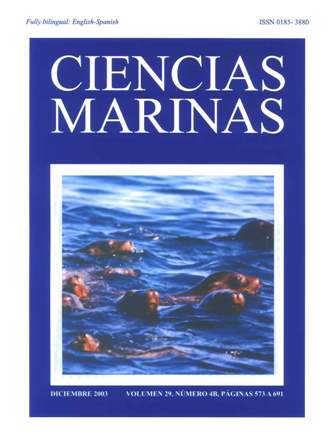Soil heat exchange in Puerto Cuatreros tidal flats, Argentina
Main Article Content
Abstract
Some interaction processes at the sediment-water and sediment-atmosphere interfaces were analyzed for each season of the year using mass aerodynamic formulas. Data were collected from Puerto Cuatreros tidal flats (Bahía Blanca estuary, Argentina) during an entire year (2000). The soil temperature was measured every 10 min by a thermistor chain at three levels below the sediment surface (–0.05, –0.15 and –0.25 m). Water and air temperatures, solar radiation and meteorological data were registered simultaneously, resulting in annual means of 14.07ºC (soil at –0.15 m), 13.69ºC (air) and 14.51ºC (water). Atmospheric and tidal conditions regulated the mudflat's thermal behavior. The soil temperature vertical profiles showed a diurnal and semidiurnal cycle due to the influence of these factors. The diurnal thermal amplitude at –0.05 m reached 14.6ºC on 20 February 2000, but only 2.8ºC on 1 July 2000. Most fluctuations of sediment temperatures were observed in the first 15 cm, with vertical gradients of 0.82ºC cm–1 during summer. In order to obtain the soil heat capacity, the granulometric composition of a sediment column was analyzed. Soil heat fluxes during a typical summer and winter day were compared. A net heat gain in the soil was observed during the summer day (+840.6 kJ m–2) and an inverse situation was found in winter, with a diurnal heat exchange of –768.6 kJ m–2.
Downloads
Article Details
This is an open access article distributed under a Creative Commons Attribution 4.0 License, which allows you to share and adapt the work, as long as you give appropriate credit to the original author(s) and the source, provide a link to the Creative Commons license, and indicate if changes were made. Figures, tables and other elements in the article are included in the article’s CC BY 4.0 license, unless otherwise indicated. The journal title is protected by copyrights and not subject to this license. Full license deed can be viewed here.

